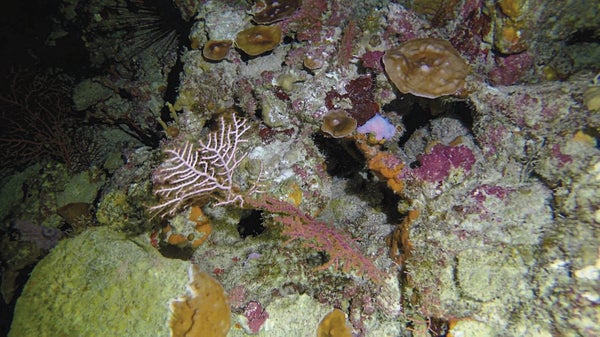February 26, 2024
2 min read
Coral reefs hundreds of feet below the ocean surface aren’t as safe as scientists thought
Recovering corals at the Chagos Archipelago.
University of Plymouth
As marine biologist Nicola Foster and her colleagues steered a remote-controlled submersible through the coral reefs of the Indian Ocean’s Chagos Archipelago, they saw corals full of color near the surface. But nearly 300 feet below, in the dimmer and colder waters of what oceanographers call the “twilight zone,” some corals had turned ghostly white, leaving them vulnerable to disease and death.
“It wasn’t something we were expecting to see,” says Foster, who studies deeper-water coral ecosystems called mesophotic reefs at the University of Plymouth in England. Mesophotic reefs would seem to be buffered from rising sea-surface temperatures that blanch higher-up corals. But this team’s 2019 observations, published recently in Nature Communications, show the deepest instance of bleaching ever recorded—suggesting similar reefs are more vulnerable than previously believed.
Bleaching often happens when warming water prompts corals to expel the colorful algae that live in their tissues and help to sustain them. Although surface waters weren’t atypically warm when Foster and her team took their measurements, the twilight zone waters neared 84 degrees Fahrenheit (29 degrees Celsius)—far above the 68- to 75-degree range in which mesophotic corals thrive.
On supporting science journalism
If you’re enjoying this article, consider supporting our award-winning journalism by subscribing. By purchasing a subscription you are helping to ensure the future of impactful stories about the discoveries and ideas shaping our world today.
The researchers realized that bleaching corresponded with the timing of the Indian Ocean Dipole, a climate pattern similar to El Niño. This phenomenon shifts the region’s surface winds and ocean currents, says study co-author Phil…
Read the full article here







